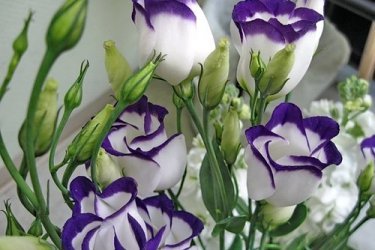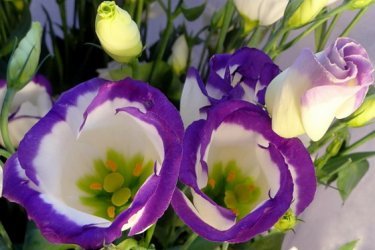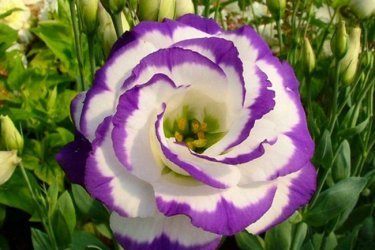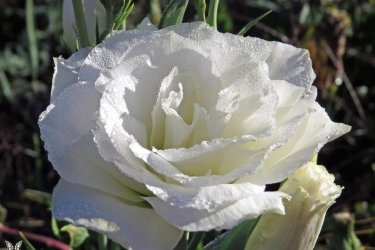Eustoma
The flowers of eustoma, or otherwise known as lisianthus, are more delicate than those of a rose, and the variety of shades of inflorescences is simply amazing. Amazingly beautiful, they evoke delight among true connoisseurs, but apprehension and doubt among novice gardeners who think that growing eustoma - the task is more than difficult.
Will a detailed study of information about the agricultural technology of this flower crop actually help?
Planting eustoma
There are three methods of flower propagation:
- bush division
- sowing seeds
- cuttings
Dividing a bush is a risky procedure and often ends in the death of the seedling. Cuttings are also rarely effective; the appearance of roots is an extremely rare phenomenon.
A more reliable option is sowing seeds, although it involves some hassle, but it will certainly allow you to get strong seedlings by spring, ready for planting in open ground.
Although in nature the flower grows as a biennial, in the garden the Irish rose is usually grown as an annual plant.
Since the period from the emergence of seedlings to the beginning of the formation of buds is quite long, about 20 weeks, it is recommended to sow the seeds in late autumn and early winter.
We grow seedlings from seeds
In order for bud formation to begin in mid-spring, you can start sowing seeds in November. First, you will need cups with a mixture of peat and perlite. You can sow 2-3 seeds in each, you don’t need to deepen them too much.
To get friendly shoots, we build a greenhouse made of film over the cups. It will be needed before the first shoots appear. If you can ensure the temperature is within +25 C, then it will take 2 weeks for them to appear.
Watering is not carried out during the germination period, but the greenhouse is ventilated systematically.
The emerging shoots will require more attention. During the winter months, eustoma care will include:
- in organizing lighting
- watering with the addition of Fundazol to the water, 1 teaspoon is required for half a liter of water
After 2 months, the seedlings are planted in personal pots and transferred to the windowsill.
Plants are planted in the garden in mid-May, you need to be guided by the number of leaves, there should not be less than 6. The holes for planting are made commensurate with the dimensions of the pot. Planting areas are chosen that are well lit.
If there is a threat of spring frosts, it will be necessary to organize the protection of seedlings.
Features of garden care
Watering the eustoma is carried out systematically, but it is not recommended to over-flood the area. For fertilizing, you can use complex fertilizers, but their concentration when applied can be slightly lower than indicated in the instructions.
The appearance of buds can be expected in late June - early July. There can be about 30 of them on each branch. Timely pruning of fading buds will promote the appearance of new ones. Flowering may continue until October.
Eustoma as a houseplant
Lisianthus can also delight those gardeners who prefer indoor plants with its flowering. Dwarf varieties are chosen for growing indoors.
When growing Irish rose as a biennial crop There will be more worries: the plant will not be able to withstand the harsh winter in open ground.
You will need to very carefully transfer it into a pot and then place it in a cool place, the recommended storage temperature is +10 C + 13 C.With the onset of spring, lisianthus is also carefully returned to the garden, to its original place.
One more thing - if you are offered to buy eustoma bulbs, it means they want to deceive you. This wonderful flower reproduces by seeds or roots; it has no bulbs.
Admire the photo of eustoma flowers and take a chance, try growing it in your garden. Use the advice received, proper care will allow you to achieve good results. For those who love beautiful plants, nothing is impossible!




